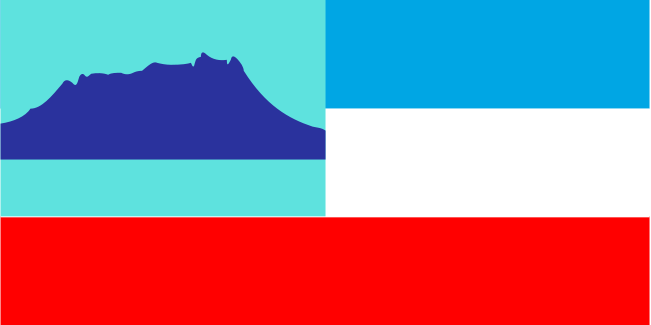 |
| Sabah (North Borneo) |
One of 13 member states of Malaysia.It is located on the northern portion of the island of Borneo and second largest state in the country after Sarawak, which it borders on its south-west. It also shares a border with the province of East Kalimantan ofIndonesia in the south.The capital of Sabah is Kota Kinabalu, formerly known as Jesselton(now Kota Kinabalu). Sabah is referred to as "The land below the wind" because of its location just south of the typhoon-prone region around the Philippines.
Origin
The origin of the name Sabah is uncertain, and there are many theories have arisen. One theory is that during the time it was part of the Bruneian Sultanate, it was referred to as Saba' because of the presence of pisang saba, a type of banana, found on the coasts of the region. Due to the location of Sabah in relation to Brunei, it has been suggested that Sabah was a Bruneian Malay word meaning upstream or the northern side of the river. Another theory suggests that it came from the Malay word sabak which means a place where palm sugar is extracted. Sabah is also an Arabic word which means morning. The presence of multiple theories makes it difficult to pinpoint the true origin of the name.
It has been said that Sabah was once referred to as Seludang in a 1365 Javanese text known as Nagarakretagama written by Mpu Prapanca.
Geographical and Environment
The western part of Sabah is generally mountainous, containing the three highest mountains in Malaysia. The most prominent range is the Crocker Range which houses several mountains of varying height from about 1,000 metres to 4,000 metres. At the height of 4,095 metres, Mount Kinabalu is the highest mountain in South East Asia . The jungles of Sabah are classified as rainforests and host a diverse array of plant and animal species. Kinabalu National Park was inscribed as a World Heritage Site in 2000 because of its richness in plant diversity combined with its unique geological, topographical, and climatic conditions.
Lying nearby Mount Kinabalu is Mount Tambuyukon. At a height of 2,579 metres, it is the third highest peak in the country. Adjacent to the Crocker Range is the Trus Madi Range which houses the second highest peak in the country, Mount Trus Madi, at a height of 2,642 metres. There are lower ranges of hills extending towards the western coasts, southern plains, and the interior or central part of Sabah. These mountains and hills are traversed by an extensive network of river valleys and are in most cases covered with dense rainforest.
The central and eastern portion of Sabah are generally lower mountain ranges and plains with occasional hills. Kinabatangan River begins from the western ranges and snakes its way through the central region towards the east coast out into the Sulu Sea. It is the second longest river in Malaysia after Rejang River at a length of 560 kilometres. The forests surrounding the river valley also contains an array of wildlife habitats, and is the largest forest-covered floodplain in Malaysia.
Other important wildlife regions in Sabah include Maliau Basin, Danum Valley, Tabin, Imbak Canyon and Sepilok. These places are either designated as national parks, wildlife reserves, virgin jungle reserves, or protection forest reserve.
Beyond the coasts of Sabah lie a number of islands and coral reefs, including the largest island in Malaysia, Pulau Banggi. Other large islands include, Pulau Jambongan, Pulau Balambangan, Pulau Timbun Mata, Pulau Bumbun, and Pulau Sebatik. Other popular islands mainly for tourism are, Pulau Sipadan, Pulau Selingan, Pulau Gaya, Pulau Tiga, and Pulau Layang-Layang.
For more informations please visit http://en.wikipedia.org/wiki/Sabah.


